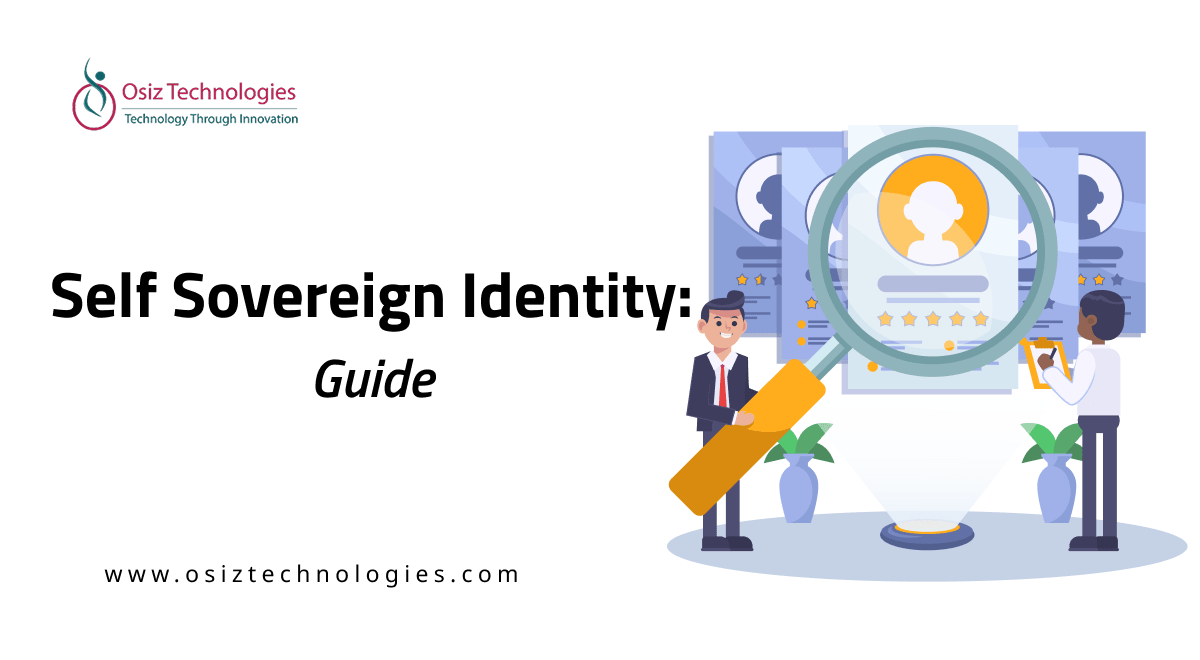What’s Wrong with Today’s Identity Systems? Current digital identity systems often rely on big providers to handle our information. This means people give up control of their data. This setup can lead to problems like annoying login processes and makes data breaches easier. Plus, it's not always clear how our identity info is being used. Because of these issues, we need a system where users own and control their own identity. That's where the idea of Self-Sovereign Identity (SSI) comes in it’s a simple and strong solution.
The Idea of SSI
Self-Sovereign Identity (SSI) empowers you to manage your digital identity, giving you ownership and control over your personal data rather than handing it over to third parties. With SSI, you handle your digital credentials like a driver's license or degree right on your device. You decide who gets access and can take that access away anytime. The goal is to give you better privacy, boost security, and cut down on identity theft by letting you share only what’s needed for any situation.
How SSI Works in Real Life
Digital Identity Creation
First, a digital ID wallet is set up for safe keeping of your verified info. Think of it as your personal ID hub, where you, or your business, are in total control. It gives you ownership over your digital ID, unlike old-fashioned systems.
Credential Issuance
Next, trusted sources give you verified info like IDs, certificates, or licenses. This info is digitally signed and tied to a blockchain identity system to prove it's real. This way, you know the data is legit, can't be messed with, and comes from a real source.
Secure Storage of Credentials
All your info is kept encrypted in your ID wallet. The blockchain only keeps the proofs (hashes) of this information, not the real data itself. This keeps things secure and private, even if the blockchain is public.
Selective Data Sharing
When you need to verify something, you only share the required details, not everything. With tech like zero-knowledge proofs, you can confirm facts without giving away private info. This keeps your data private while still getting the job done.
Verification by the Recipient
The person checking your info looks at the digital signature and compares it to the blockchain proof. If it matches, they instantly know it's real and hasn't been changed. This cuts out middlemen or needing to confirm with the source every time.
Reuse and Interoperability
Once your info is verified, you can use it on different websites and systems. This saves time by avoiding repeat verification and makes managing your ID across platforms easier. It creates a single system of trust, making online interactions quicker and more sure.
Continuous Trust Cycle
Self-sovereign identity creates a trust loop between ID issuers, holders, and verifiers. Each interaction makes things clearer and keeps everyone accountable. This approach makes ID management secure, ethical, and future-ready by relying less on central authorities.
Breaking Down SSI Components
Decentralized Identifiers (DIDs)
DIDs are unique digital IDs that let people prove they own their identity without a central authority. Each Decentralized Identifiers lives on a blockchain and connects to keys that check authenticity and control. This setup cuts out third parties, so people and groups have full control over their online identities.
Verifiable Credentials (VCs)
VCs are digital forms of documents we trust, like IDs or licenses, and are signed by verified sources. Verifiable Credentials can’t be messed with and are validated with proofs, which confirms the info is real. People can share these credentials and only show what’s needed, keeping their info private.
Digital Identity Wallet
A digital identity wallet is an app that keeps, handles, and shares DIDs and VCs safely. It connects the identity owner and the verification setup, allowing data to be shared with consent. With encryption and blockchain checks, the wallet makes sure identity data stays private and in the user's hands.
Why SSI Matters for Individuals & Organizations
For Individuals
Data Ownership: Full control over personal identity data without third-party dependency.
Privacy Protection: Share only required information through selective disclosure.
Security: Cryptographic verification minimizes risks of data theft and misuse.
Portability: Use the same verified identity across multiple platforms and services.
Transparency: Clear visibility into how and when identity data is used.
Convenience: Eliminates repeated KYC or verification processes.
Trust: Builds credibility through verifiable, tamper-proof credentials.
For Organizations
Reduced Fraud: Verifiable credentials ensure identity authenticity and prevent fake submissions.
Compliance: Simplifies adherence to data privacy and KYC regulations.
Operational Efficiency: Streamlines onboarding and verification processes.
Cost Savings: Cuts expenses linked to manual identity checks and data management.
Interoperability: Enables smooth collaboration across digital ecosystems and platforms.
User Trust: Strengthens customer relationships through transparent, secure interactions.
Data Minimization: Limits the need to collect and store sensitive customer information.
Real-World Example You Can Relate To
Project: The Sovrin Network
The Sovrin Network is a working example of Self-Sovereign Identity. It's a blockchain designed to handle digital IDs without a central authority. Sovrin allows people and groups to create, manage, and verify these IDs on their own.
Built on Hyperledger Indy, Sovrin uses Decentralized Identifiers (DIDs) and Verifiable Credentials (VCs). This lets users share their ID info securely and privately, with their consent. The network works as a worldwide trust system where trusted groups can issue credentials, and individuals can share digital proofs of identity.
For example, a university can issue digital diplomas via Sovrin which employers can then check without contacting the school. This reduces fraud, speeds up the process, and protects data ownership. Sovrin is a model for SSI projects everywhere.
How to Prepare for an SSI Future
Understand Self-Sovereign Identity. Know how it's built, what it includes, and how it's managed. DIDs, Verifiable Credentials, and digital wallets work together. Companies and people need to know data ownership, privacy, and trust. This helps them follow identity standards.
To get ready for SSI, use open frameworks like W3C DID and VC specs. These standards make sure identities can move easily between different systems, industries, and areas. Using these protocols helps make sure things work well together in the future and makes integration easier.
SSI puts users in charge, so strong data management is a must. Companies should check they follow privacy rules like GDPR or CCPA and manage consent clearly. Setting up ways to manage things early on builds trust and prepares you for ecosystems.
Getting ready for SSI also means upgrading systems to handle things like cryptography, blockchain, and secure storage. Businesses need strong key management and storage options. A solid digital foundation ensures reliability and data stays safe as SSI becomes more common.
Working with different networks and projects helps companies learn early. Testing in sandboxes lets you see how things work together and how well they perform. Trying things early encourages new ideas and puts companies at the front of digital identity changes.
In the end, SSI depends on people understanding it. Workshops and training make sure there's a smooth change. Building a culture of knowledge makes SSI something that's planned and smart, not just a reaction.
Conclusion
As a leading Web3 Development Company, Self-Sovereign Identity is a big move toward a digital world with a smooth balance of trust, privacy, and control. SSI Technology lets people and orgs handle verified credentials minus central go-betweens. This creates a base for clear and secure operations in every field. As digital setups grow, using SSI ideas will simplify how we handle identity and set new trust standards in the future.
Listen To The Article
Recent Blogs

X-Mas 30%
Offer











